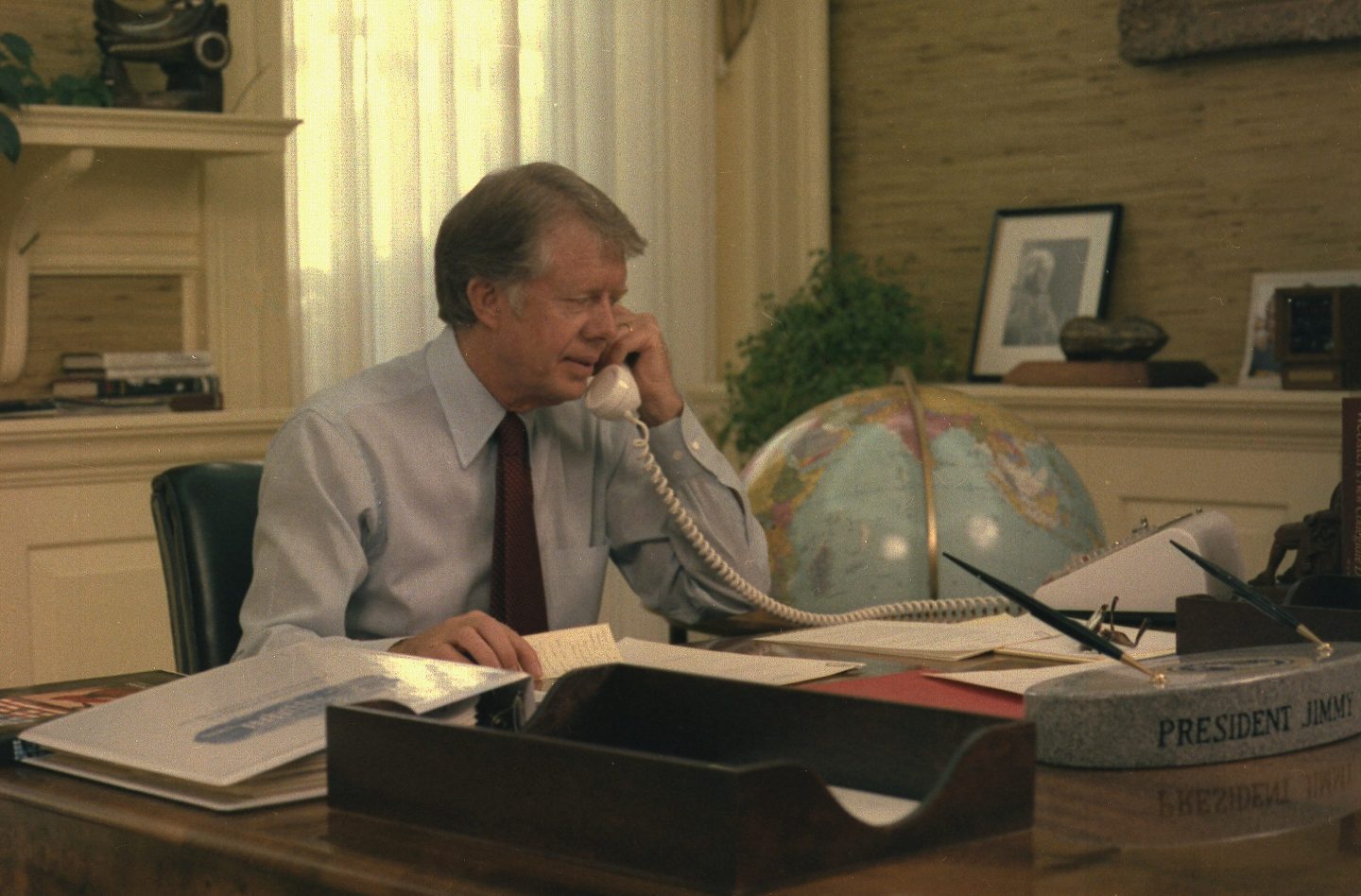- Former President Jimmy Carter passed away at the age of 100 on Sunday, and his White House tenure, which was marked by high inflation, has drawn parallels to President Joe Biden’s.
The passing of former President Jimmy Carter on Sunday came as current President Joe Biden gets ready to leave the White House in a few weeks, after parallels were drawn between both administrations.
While some experts point to key differences between the two presidents, they both had to grapple with high inflation and energy prices.
During Carter’s term, inflation topped 14% in 1980, forcing the Federal Reserve hike rates to 19% in the final weeks of his administration. By comparison, inflation under Biden peaked at 9% in 2022 as oil spiked after Russia invaded Ukraine, while the fed funds rate reached as high as 5.25%-5.5% in 2023.
Carter inherited high inflation from President Richard Nixon’s term, which saw budget deficits and a Middle East oil shock that spiked energy prices.
By October 1978, Carter delivered a speech laying out his plan to tackle inflation, though he acknowledged there was no single solution.
He vowed to shrink the budget deficit, slash the federal work force, cut wasteful spending, curb regulation, and increase competition in the economy. He touted his earlier efforts to deregulate the airline industry and looked ahead to doing the same in trucking and railroads.
Carter also nodded to agricultural policies to limit food inflation as well as the Fed’s role in using monetary policy to control money supply, but put the primary burden on businesses.
“The government will do its part, but in a country like ours, government cannot do the job alone,” he explained. “In the end, the success or failure of this effort will also rest on whether the private sector will accept—and act on—the voluntary wage and price standards I am announcing tonight.”
But less than a year after that speech, another oil shock was rippling through the economy and further stoking inflation. This time, the Iranian revolution caused country’s crude production to dip, sending prices higher.
As panic buying worsened the situation, some states resorted to rationing at gas stations, resulting in the infamous long lines of cars waiting to fill up.
In July 1979, Carter delivered another televised address that came to be known as the “malaise speech,” even though he didn’t actually say that word.
While critics have panned it for its downbeat tone that bemoaned a lack of confidence in the country, the speech also included an aggressive approach to deal with the energy crisis.
To curb dependence on foreign oil, he promised to set import quotas and encourage alternate sources, such as coal, shale oil, plant-based fuel, unconventional gas, and solar energy.
“We will protect our environment,” Carter said. “But when this nation critically needs a refinery or a pipeline, we will build it.”
He highlighted public transportation and conservation too, including carpools, slowing to the speed limit, and lowering thermostats.
Ending on a positive note, he framed the effort to defeat the energy crisis as a way to restore national confidence and was confident about victory.
“You know we can do it. We have the natural resources. We have more oil in our shale alone than several Saudi Arabias. We have more coal than any nation on Earth,” Carter said. “We have the world’s highest level of technology. We have the most skilled work force, with innovative genius, and I firmly believe that we have the national will to win this war.”
Decades later, the private sector eventually did lead the way to an energy boom as wildcatters in the U.S. Oil patch used hydraulic fracturing and horizontal drilling techniques to unlock vast amounts of crude and natural gas from shale formations.
The U.S. Is now the world’s top crude producer—and at brief periods in recent years has even exported more oil products than it has imported.

